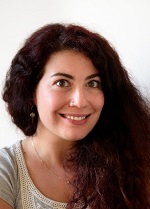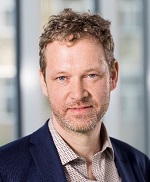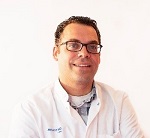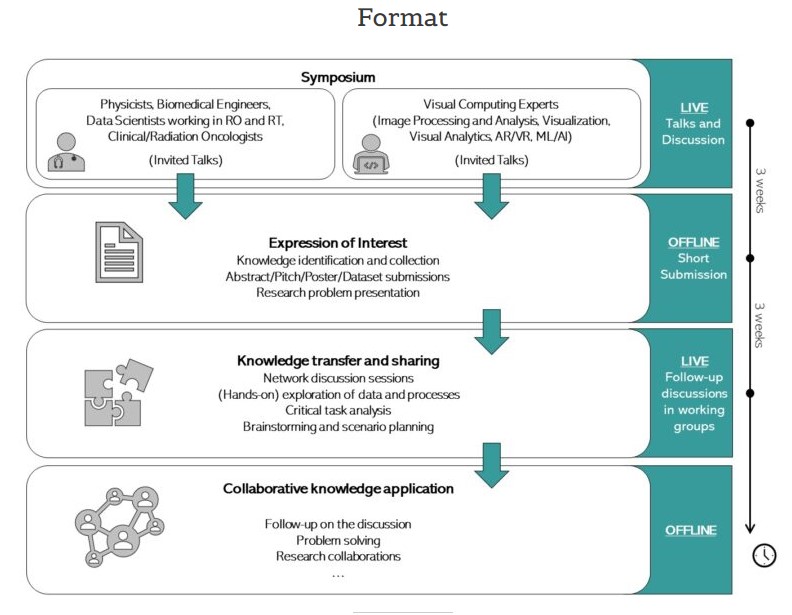Report on an online workshop entitled "Bridging Visual Computing and Radiation Oncology": multimodal and multiparametric approaches - PDF Version
A new initiative that was launched in the spring originated from the collaboration between some members of the European SocieTy for Radiotherapy and Oncology (ESTRO) and experts in the visualisation field. Visual computing is a research field within the visualisation domain that has developed sophisticated research approaches for radiation oncology. However, only a few approaches have been integrated fully into daily clinical practice, patient care and industrial products. We organised an online workshop series through which we aimed to provide a bridge between specialists from the domains of visual computing and those from radiation oncology who were interested in collaborating on cutting-edge topics of research. This was intended to provide a space for networking and interaction that would nurture new ideas and initiate collaborations between specialists in the two domains. From this, we anticipated development of improved understanding of visual computing solutions (and of novel trends in the field) that were applicable and relevant to research questions in radiation oncology.
The target audience was everyone with an interest in how novel strategies from the domain of visual computing could be applied to radiation oncology research and practice. Everybody was invited and encouraged to join whether they worked in academia, the clinic or industry!
Symposium to set the scene
The workshop series started with a symposium that involved two invited talks from both domains. Uulke van der Heide (The Netherlands Cancer Institute-Antoni van Leeuwenhoekziekenhuis (NKI-AvL), The Netherlands) presented a radiotherapy topic entitled “Multi-parametric imaging for tumour characterisation and target delineation”. This was followed by a presentation from Noeska Smit (University of Bergen, Norway) from the visualisation domain on “Multi-modal medical visualisation”. Almost 50 participants attended the free workshop; approximately 55% from radiation oncology (a mix of clinicians and academics), 40% from the visualisation and visual computing domain (mainly academics) and a few participants from industry.
Expression of interest followed by knowledge transfer
After the first symposium, there was a follow-up phase during which participants could submit expressions of interest (e.g. abstracts, posters, dataset description, visualisation tools) to be discussed in sub-groups in a follow-up meeting on 19 May 2021. The purpose of the meeting was formation of collaborations. All submissions were accepted but it was mandatory that participants submitted a contribution to be invited for this second round.
The two-hour follow-up meeting involved approximately 20 participants (again, a 50% mix of visualisation and radiotherapy participants, and the majority were junior (e.g. PhD) participants). The format was a two-minute pitch on the research interest/question/dataset. Afterwards further discussion was initiated between participants in three break-out rooms. Feedback was very positive; it seemed that participants liked such cross-domain discussions.
Currently we are thinking of hosting a second topic, as we have found that the format offers a successful way to promote knowledge dissemination (symposium) and networking (knowledge-transfer meeting). We think this is a format that should be explored more in the future, especially because travel costs and non-attendance at each other’s conferences would limit the networking and participation between two different domains in science.

Renata Raidou
Technische Universität Wien
Vienna, Austria

Ludvig Muren
Danish Centre for Particle Therapy
Aarhus University Hospital
Aarhus, Denmark

Wouter van Elmpt
Department of Radiation Oncology (MAASTRO)
Maastricht University Medical Centre
Maastricht, The Netherlands
